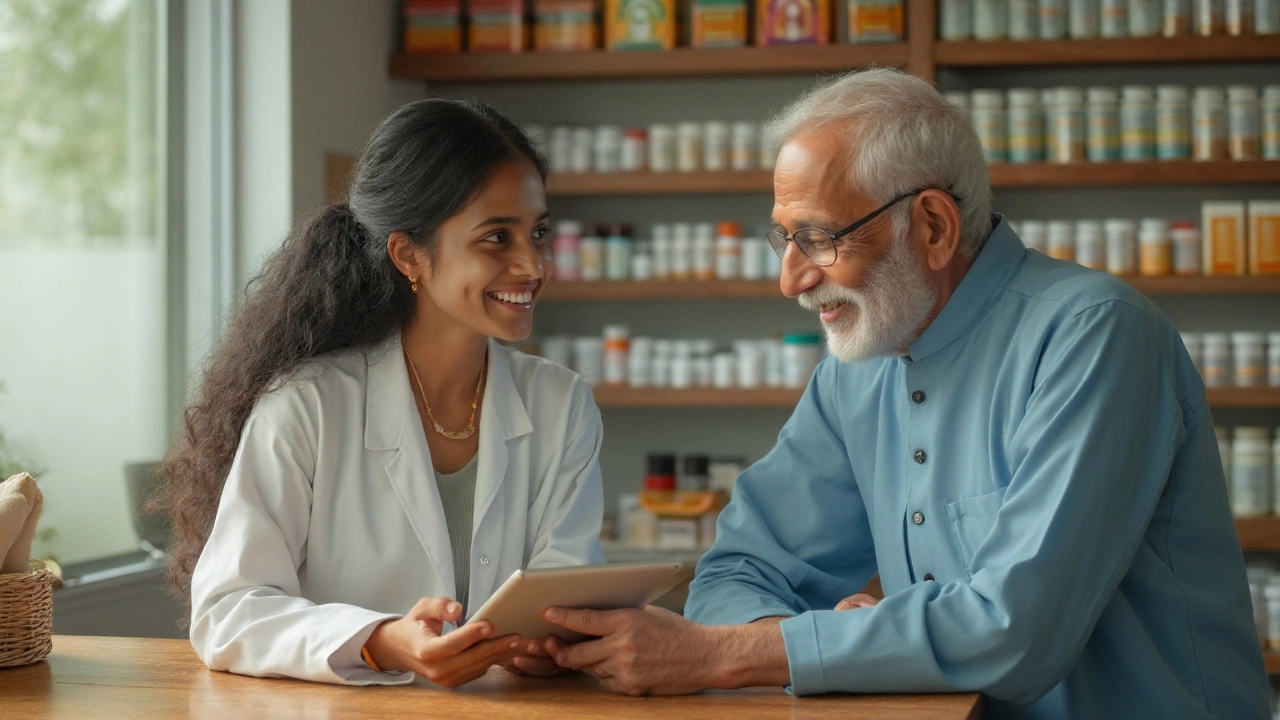Pharmacist‑Patient Communication: How to Build Trust Effectively
Learn practical ways pharmacists can improve communication with patients to boost trust, enhance adherence, and ensure safer medication outcomes.
Continue ReadingWhen you walk into a pharmacy, there’s a lot more than just shelves of pills. Knowing which over‑the‑counter (OTC) products actually help, which are just hype, and how to use them safely can save you time, money, and headaches. Below we break down everyday pharmacy questions into simple answers you can use right now.
Winter coughs and colds hit hard, but not every medicine on the counter does the job. Decongestants shrink swollen nasal passages, while antihistamines calm sneezing and watery eyes. Use a decongestant if your nose feels blocked; pair it with a pain reliever if you have a fever. Avoid mixing two decongestants – it can raise blood pressure. A warm honey‑lemon drink, plenty of fluids, and rest are the cheapest, safest back‑up plan.
Ever heard that you can’t take ibuprofen with a cold? That’s a myth – ibuprofen reduces fever and pain, but skip it if you have stomach ulcers. Another common claim is that “natural” remedies are always safe. Some herbal teas can thin blood, which matters if you’re on anticoagulants. The rule of thumb: if a product promises a cure in a few days, doubt it.
Knowing the facts lets you cut through the noise. Look for products backed by clinical studies, check the active ingredient list, and read the label for dosage limits. If you’re unsure, a quick chat with the pharmacy staff usually clears things up.
Stuffy nose? Not all nasal drops are equal. Saline drops are gentle and safe for kids – they just add moisture. Steroid drops shrink inflammation but need a doctor’s nod for long‑term use. Decongestant drops work fast but can cause rebound congestion if used more than three days. Pick the type that matches your symptom and follow the dosing instructions on the bottle.
Car rides can turn into mini‑first‑aid situations. Keep a small kit with these basics: a few adhesive bandages, antiseptic wipes, an oral rehydration powder, antihistamine tablets for sudden allergies, and a pain reliever like paracetamol. Add a small bottle of saline for eye rinsing and a pair of tweezers for splinters. Store everything in a waterproof pouch and check expiry dates twice a year.
When you need something that truly works, these categories have the strongest evidence:
These items have been tested in clinical trials, so you know they do what they promise when used correctly.
Good pharmacy practice is about matching the right product to the right problem and avoiding unnecessary risks. Start by reading labels, checking active ingredients, and asking the pharmacist if a product fits your needs. Remember, the cheapest option isn’t always the best, but the most expensive isn’t a guarantee either.
Next time you stand in front of the pharmacy aisle, you’ll have a clear game plan: pick a science‑backed product, respect the dosage, and keep a few essential items handy for emergencies. Your health decisions become easier, and you’ll spend less on stuff that doesn’t work.

Learn practical ways pharmacists can improve communication with patients to boost trust, enhance adherence, and ensure safer medication outcomes.
Continue Reading